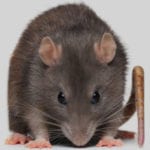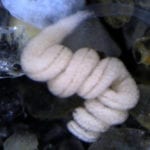 Mysteries
Mysteries  Mysteries
Mysteries  History
History 10 Surprising Stories About the Texas Rangers
 Humans
Humans 10 Philosophers Who Were Driven Mad by Their Own Theories
 Miscellaneous
Miscellaneous 10 Video-Game-Worthy Weapons and Armors from History
 Weird Stuff
Weird Stuff 10 Psychics Who Accurately Predicted Wartime Events
 The Arts
The Arts 10 Pieces of Art Inspired by a Broken Heart
 Health
Health 10 Science Fiction-Sounding New Medical Treatments
 History
History 10 Surprising Facts About the Father of Submarine Warfare
 Space
Space Ten Astonishing New Insights into Alien Worlds
 Weird Stuff
Weird Stuff 10 Bizarre Summer Solstice Rituals Still Practiced Today
 Mysteries
Mysteries Top 10 Haunting Facts About the Ghost Ship MV Alta
 History
History 10 Surprising Stories About the Texas Rangers
 Humans
Humans 10 Philosophers Who Were Driven Mad by Their Own Theories
Who's Behind Listverse?

Jamie Frater
Head Editor
Jamie founded Listverse due to an insatiable desire to share fascinating, obscure, and bizarre facts. He has been a guest speaker on numerous national radio and television stations and is a five time published author.
More About Us Miscellaneous
Miscellaneous 10 Video-Game-Worthy Weapons and Armors from History
 Weird Stuff
Weird Stuff 10 Psychics Who Accurately Predicted Wartime Events
 The Arts
The Arts 10 Pieces of Art Inspired by a Broken Heart
 Health
Health 10 Science Fiction-Sounding New Medical Treatments
 History
History 10 Surprising Facts About the Father of Submarine Warfare
 Space
Space Ten Astonishing New Insights into Alien Worlds
 Weird Stuff
Weird Stuff 10 Bizarre Summer Solstice Rituals Still Practiced Today
10 Recently Discovered Awesome Animal Abilities
Anyone who’s had a pet dog, cat, or other animal is well aware of their amazing abilities. A dog can smell scents and odors imperceptible to people, and a cat’s fantastic balance and nimble coordination are greater than those of the most gifted acrobat or gymnast. Animals that aren’t usually kept as pets also exhibit incredible powers, such as hibernation, using sonar to navigate, walking on water, and delivering powerful electrical shocks to prey or threatening predators. These astonishing powers aren’t the only ones animals possess, though, as the 10 recently discovered awesome animal abilities on this list clearly attest.
Top 10 Animals That Surprisingly Make Good Guards
10 Heat Smell

Dogs have a tremendous sense of smell. Their noses are “up to a hundred times more sensitive” than those of people. They can even smell radiation, or, more specifically, thermal radiation, or heat, even when it’s “weak.” Their ability to sniff out the body heat of potential prey serves them well when they develop “impaired sight, hearing, or smell,” because their being able to detect body heat with their noses enables them to hunt, even when their senses aren’t as sharp as they used to be. Ethologist Marc Bekoff, professor emeritus at the University of Colorado, Boulder, is so impressed with this newly discovered animal ability that he characterizes it as nothing less that “fascinating.”
Other animals, including black fire beetles, some snakes, and the common vampire bat, are known to use this ability, but no one suspected dogs could be capable of sniffing out body heat. The “smooth skin on the tips of [dogs’] noses around the nostrils” is both “moist [and] colder than the ambient temperature.” Aware of this fact, scientists wondered whether dogs might be able to sense heat with their noses. They put the matter to the test by subjecting them to an MRI scan while the dogs were exposed to objects emitting various levels of thermal radiation. The resulting data showed that, yes, dogs can smell “weak hot spots.”[1]
9 Magentoreception
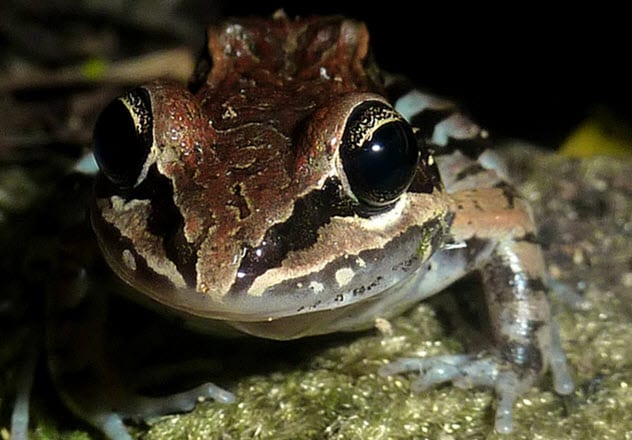
Dogs’ ability to smell heat isn’t the only amazing power scientists have recently discovered. It’s been known for some time that birds, salamanders, and frogs, among other animals, can navigate by sensing the planet’s “weak magnetic field.” The sense that accounts for this ability is known as magentoreception. Dogs, it has been found, also possess this sense, just as has been “long suspected.” Although it’s unclear how canines are able to detect the Earth’s magnetic field, it’s now known that they do. “I’m really quite impressed with the data,” biologist Catherine Lohmann said.
Dogs use this awesome ability to scout out new paths through unfamiliar territory, which helps them to hunt, and their magentoreception may help them to perform other tasks as well. Further research is needed concerning this amazing discovery. It seems a safe bet to predict that it will soon be forthcoming.[2]
8 Oxygen-less Survival
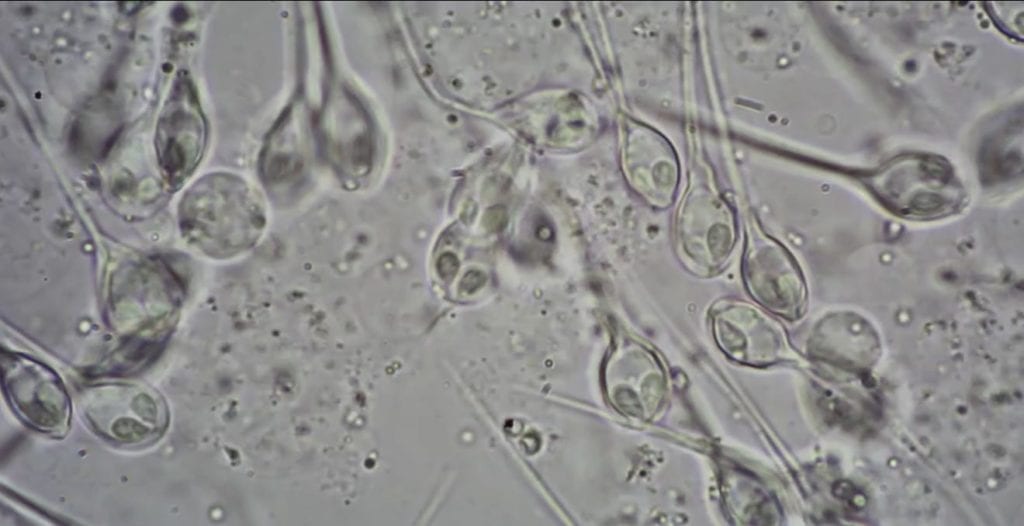
It’s tiny. Its home is the salmon, in the muscle of which the parasite lives. Neither its size nor its abode is what’s most awesome about the animal, though. It’s able to get along just fine without an element vital to the lives of every plant and animal on the planet—except itself. The 10-celled Henneguya salminicola (H. salminicola) is the only animal known to be able to breathe without oxygen. One of the many people astonished by H. salminicola’s ability is Dorothée Huchon, a zoologist at Israel’s Tel Aviv University, who declared, “Aerobic respiration is a major source of energy, and yet we found an animal that gave up this critical pathway.”
The absence of mitochondrial DNA in the parasite’s structure indicates it doesn’t need the genes required for respiration, because these genes are contained in this portion of DNA. The fact that the genes are missing shows that H. salminicola can no longer “perform aerobic cellular respiration.” In other words, it survives without the need for oxygen. Although it’s not known how the parasite accomplishes this unique feat, Huchon said that it’s possible that H. salminicola somehow siphons off energy from its host’s cells. It’s also possible, the zoologist says, that the parasite “may have a different type of respiration such as oxygen-free breathing.” In either case, Huchon said, “It is generally thought that, during evolution, organisms become more and more complex, and that simple single-celled or few-celled organisms are the ancestors of complex organisms. But here, right before us, is an animal whose evolutionary process is the opposite.”[3]
7 “Lasso Locomotion”
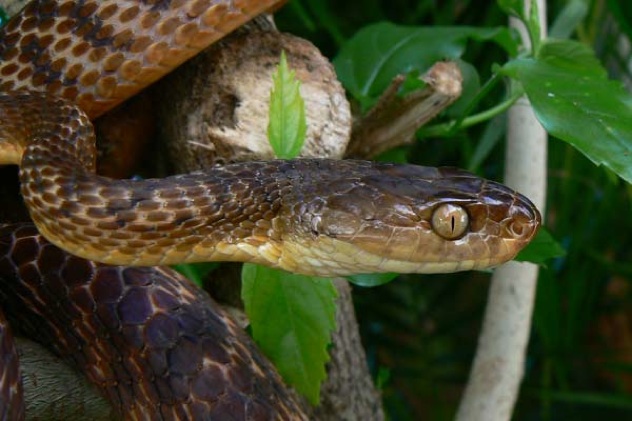
Some snakes have exhibited a bizarre, but fascinating ability to “climb” trees using a method called “lasso locomotion.” The brown snakes, which were brought from Australia, Papau New Guinea, and the Pacific Islands by cargo ships back in the days of World War II, have become more than nuisances in Guam, where the predatory reptiles have wiped out ten indigenous species of birds. To fight back, local inhabitants of the island have come up with some creative tactics, including “air-dropping drug-filled mice” for the snakes to nibble on and using dogs to hunt down the snakes. So far, such efforts have met with failure.
Birds are especially susceptible to attack, because the brown snakes live in trees. To protect the birds, Colorado State University ecologists Julie Savidge and Tom Seibert recommended that smooth metal poles be installed “at the base of bird nest boxes.” The snakes wouldn’t be able to climb such smooth surfaces, and the birds would be safe, the scientists reasoned. The snakes surprised them. On-site video cameras caught the predators winding their bodies about the poles, like lassos, and then wiggling up the poles. Seibert’s response: “We just kind of looked at each other in shock. I mean, this wasn’t something a snake was supposed to be able to do.” This awesome, recently discovered ability adds a fifth means of snake motivity, lasso locomotion, to the four already identified: slithering, rectilinear movement, lateral undulation, and concertina locomotion.[4]
6 Empathy
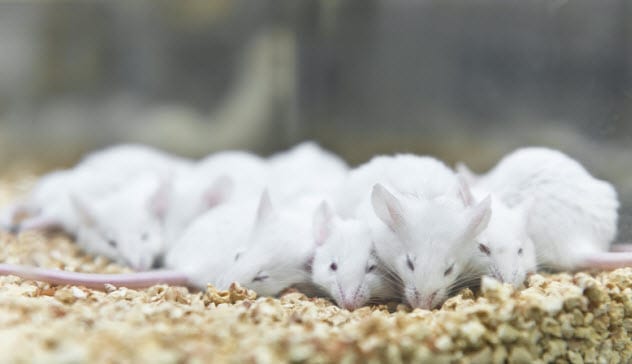
Like many other animals, rodents are social. They live in groups, and they depend upon one another for their survival. But do they also feel each other’s pain? Can they empathize? That’s what a team of researchers wanted to know. Defining empathy as “the ability to understand what other individuals in their group [or “conspecifics,” as scientists call them] feel and to share that feeling,” the researchers set out to find out. They divided their mousy subjects into three groups, each of which would be subjected to a different sort of stress. One group had their tails pinched. The second group was injected with formalin. The third group was anesthetized.
“The test mice in this study could . . . reliably determine that the treated mouse was in a pain state using visual cues,” the team’s article in the Brain and Behavior journal stated. As a result of empathizing with the mice in pain, other mice, the “cage-mates” of the “distressed” animals, showed empathetic behavior toward the victims by exhibiting “no heightened interest in anesthetized conspecifics or conspecifics with swollen limbs,” but showing “interest in formalin?injected conspecifics.” It was less clear whether “stranger mice” experienced empathy for the “distressed mice.”[5]
5 Shape-shifting
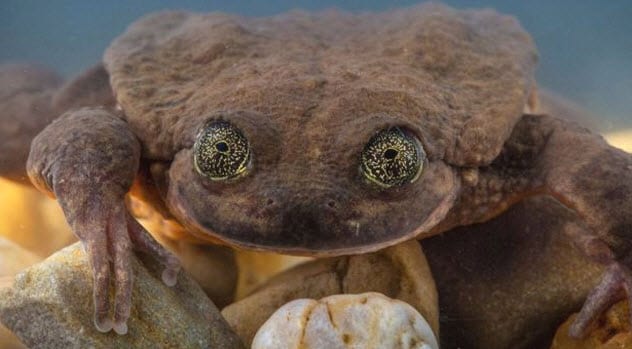
Although the mutable rain frog was first discovered in 2006, in the rain forest of Ecuador, the amphibian’s awesome ability to shift its shape wasn’t known until some years later, when a second of its species was found. Its ability to change the texture of its skin from rough and “spiny” to “smooth” in only minutes made one researcher, in catching the frog for a photograph, thought she’d grabbed the wrong specimen. Later, intending to return it to its natural habitat, the researchers placed moss in the amphibian’s container. When they looked in on the frog after a while, it had reverted to its rough skin.
A series of photographs show the mutable rain frog at various segments of time—90 seconds, 150 seconds, 180 seconds, 270 seconds, and 330 seconds. Within three minutes, it could be mistaken for a different frog; within five and a half minutes, it probably would be.
The scientists were even more amazed when a second species of frog, the Sobetes robber frog, was found to have this same astonishing ability. Now, researchers think, many other amphibian species may be able to shift their shapes as well.[6]
4 Brainless Learning
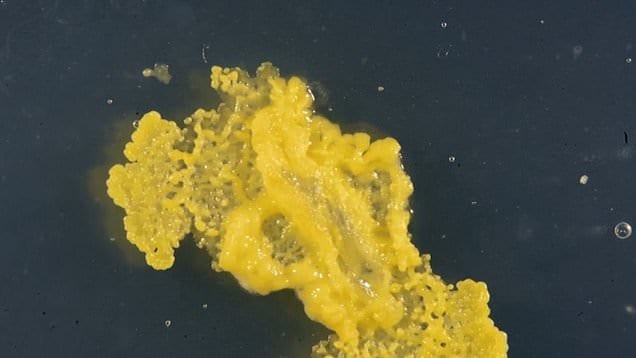
It’s yellow—or “yellowish”—and it resembles a plant, sometimes. Other times, it looks like a mushroom. Still other times, it might be mistaken for, well, mucus. It’s a mystery. Scientists have no idea, yet, whether “The Blob,” as the whatever-it-is is called at present, is an animal or a fungus. The bizarre life form was discovered in France, at the Paris Zoological Park, looking “like a fungus, but acting like an animal.” It also has some other awesome features, among which are “720 sexes,” the ability to “move without legs or wings,” and the power to heal “itself in two minutes if cut in half.”
Needless to say, the zoo’s director, Bruno David, is impressed with The Blob, perhaps most of all because “it has no brain but is able to learn.” It can find its way out of a maze to locate food or bypass a line of salt, which it “hates.” When food awaits it beyond a “salt barrier,” The Blob will find a way to get around the line of salt more quickly than it’s apt to do otherwise. Such learning is impressive, indeed, but it’s not all The Blob can do. “If you merge two blobs, the one that has learned will transmit its knowledge to the other,” David said. The mysterious Blob is named for the alien in the science fiction-horror movie The Blob, starring Steve McQueen. Like the zoological Blob, the movie Blob liked to eat, too, so much so that it consumed pretty much everything in its path during its visit to a small Pennsylvania town.[7]
3 Survival Genes
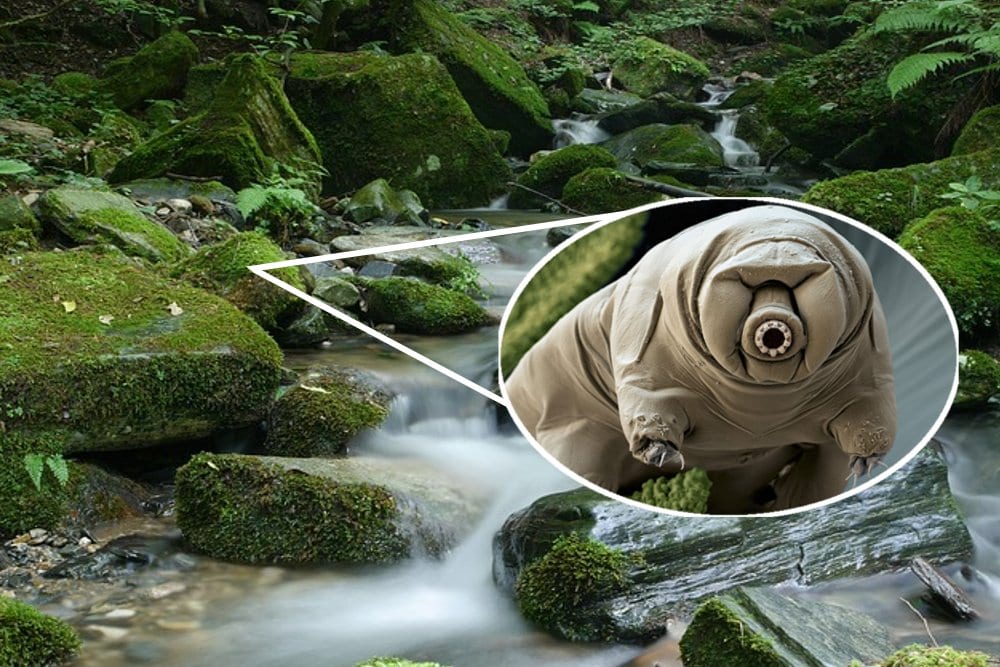
Despite their microscopic size, tardigrades are tough. These “water bears,” as they’re better known, survive extremes that would kill other animals much larger than themselves, including us. They owe their awesome survivability to special “survival genes.” One genus of tardigrades, Ramazzottius variornatus, are especially hardy. In fact, they are “arguably the toughest and most resilient species found in the entire tardigrade clan.”
Geneticist Takekazu Kunieda and his colleagues at the University of Tokyo have discovered one of the secrets of the water bears. They’ve “evolved a special protein that protects [their] DNA from radiation damage. Extremophiles, they are also capable of surviving such extreme conditions as “freezing, total dehydration, . . . and even the vacuum of space.” In fact, “scientists successfully revived a tardigrade that had been frozen solid for more than three decades—a new record for this durable species.”
It was once thought that tardigrades didn’t develop their awesome abilities on their own but that they had had help. Geneticists at the University of North Carolina at Chapel Hill “found that 17.5 percent of the tardigrade genome comes from other organisms, including plants, fungi, bacteria, and viruses” as a result of horizontal gene transfer. However, the findings of the Japanese researchers “challenges this assumption,” suggesting that the tardigrades’ awesome survivability are “proprietary,” rather than consequences of gene transfer. Researchers believe that the tardigrades’ amazing abilities may have remarkable medical and genetics applications.[8]
2 Super Taste

A taste bud is an amazing receptor. These clusters of specialized cells, which detect the flavors of everything from vanilla ice cream to olives, may not be as well understood as once thought. The taste buds of mice are revolutionizing the way scientists think about the sense of taste and the ability of taste buds to detect flavors.
Tastes are usually classified into five types: bitter, sweet, salty, sour, and umami. (“Umami” refers to a savory taste.) Traditionally, scientists held that taste buds could detect only one or two types of flavor, and research showed that taste cells seemed able to pick up only certain compounds. For example, such cells might detect “sweet sucralose” or “bitter caffeine,” but not both. Thanks to the taste buds of mice, this picture has become a lot more complex.
When neurophysiologist Debarghya Dutta Banik and colleagues removed certain taste cells from the taste buds of mice, the rodents’ other taste cells responded to various flavors that were introduced to them. After the subject mice were presented with several tasty compounds, researchers discovered that the mice had “a group of cells” capable of sensing “multiple chemicals across different classes.” To make matters still more complicated, the brain was also shown to affect a mouse’s sense of taste. Without a “key protein needed for these broadly tasting cells to relay information,” the brain didn’t receive “the flavor messages” and the mice would lap up “bitter solutions,” despite the rodents’ normal dislike of such tastes, Banik said.
As Kathryn Medler, a neurophysiologist at the University at Buffalo in New York, points out, the sense of taste has survival value. Without the ability to taste foods, people would find meals much less palatable and might eat less, becoming malnourished. The sense of taste has another survivability function as well. Taste also helps people avoid food that might be “spoiled or toxic,” since it is likely to taste unpleasant, should it be sampled. The fact that “taste works similarly in mice and humans” suggests that the sense of taste might be restored to people who lose this sense because of the effects of chemotherapy.[9]
1 Time Measurement

Animals can tell time. When an animal is waiting, a group of recently discovered neurons “turn on like a clock.” Daniel Dombeck, the leader of research conducted at Northwestern University, said that his team’s findings show that dogs, like other animals, have “an explicit representation of time in their brains” by which they are able to “measure a time interval.” That’s how pet dogs know whether their caretakers are behind schedule in feeding them.
Dombeck’s knowledge that the temporal lobe of the brain “encodes spatial information in episodic memories” led him to hypothesize that the lobe might also be “responsible for encoding time.” As James Heys, a postdoctoral fellow in Dombeck’s laboratory, explained, every memory has two common elements: “space and time,” since memories occur “in a particular environment and are always structured in time.”
To test his hypothesis, Dombeck and his team built an actual treadmill “in a virtual reality environment,” through which a mouse ran down a hallway to a door “halfway down the track.” Six seconds after the mouse arrives at the door, the door opens, admitting the rodent to a waiting reward. The physical door was later replaced by an “invisible door” in the virtual reality scenario. Various cues alerted the mouse to the whereabouts of the invisible door, but, in repeated tests, the animal still waited six seconds before continuing down the track to claim its reward.
With the mouse hooked up to a brain imaging apparatus, Dombeck and his colleagues monitored its brain activity and found that neurons related to “spatial encoding” fired as the mouse ran toward the invisible door but “turned off” when it reached the door, and that “a new set of [timing] cells” were activated instead. “This was a big surprise and a new discovery,” Dombeck said. One of the potential applications of his team’s research, Dombeck observed, might be “new early-detection tests for Alzheimer’s” in which people suspected of having the disease would be asked to “judge how much time has elapsed or ask them to navigate a virtual reality environment.”[10]
Top 10 Surreal Animals That Really Exist
About The Author: An English instructor at the University of Nevada Las Vegas, Gary L. Pullman lives south of Area 51, which, according to his family and friends, explains “a lot.” His four-book series, An Adventure of the Old West, is available on Amazon.


